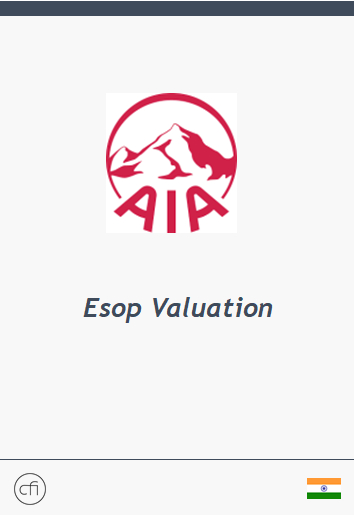Valuation for the equity raise from IIFL Special Opportunities Fund, Standard Chartered Private Equity and Affirma Capital

Valuation for purchase of shares by Apax Partners

In the dynamic world of finance and investment, the integration of Environmental, Social, and Governance (ESG) factors into business valuation has become a paramount consideration. As the global business community grapples with the requirements of sustainability and responsible corporate practices, investors are increasingly recognizing the need to go beyond traditional financial metrics. This article explores the multifaceted realm of ESG, delving into its significance, the process of integrating these factors into business valuation, challenges encountered in this endeavour and the highlights of Business Responsibility and Sustainability Reporting (“BRSR”) Core which has been introduced recently.
Understanding ESG & Its Importance
ESG encompasses a triad of critical factors that collectively shape a company’s approach to sustainability, ethical practices, and corporate governance. Environmental criteria evaluate a company’s impact on the planet, social criteria gauge its relationships with stakeholders, and governance criteria assess the internal structures guiding decision-making. The importance of ESG lies in its ability to provide a holistic view of a company, reflecting its commitment to long-term resilience, ethical conduct, and positive societal impact. Investors are increasingly recognizing that companies with robust ESG practices are not only better equipped to manage risks but are also likely to be more resilient in the face of evolving market dynamics.

Source: FTSE Russel
Integration of ESG into Valuation
The integration of ESG factors into business valuation marks a paradigm shift in how companies are assessed for investment. Traditional valuation methods are being augmented with ESG considerations, as investors seek a more comprehensive understanding of a company’s performance and its ability to create long-term value. ESG integration involves analyzing a company’s ESG practices and assigning a quantitative value to these intangible factors. Below are ways to incorporate the ESG impact under the market and income approach:
The Market Approach:
To account for ESG considerations, valuation under the market approach should:
Identify and assess ESG practices for comparable companies and industries, then
Assess the performance of the subject company for such criteria, and
Calibrate the market inputs to the subject entity to take into account the relevant performance as compared to the comparable companies.
An example for adjusting the ESG factor under market approach is as follows:

A significant limitation of this method is that ESG data, disclosures, and rating systems are currently in their early stages of development, particularly for entities that are often private companies. Consequently, the scoring process is subjective, as different practitioners may assign varying weightings or scores to distinct ESG factors and practices implemented by companies.
The Income Approach:
To account for ESG considerations, valuation under the income approach should consider its impact on the discount rate or cash flows itself.
While discount rate adjustments can be used to incorporate ESG into the Discounted Cashflow approach (DCF), adjusting the discount rate may lead to double counting if beta values have reflected the market’s perspectives on ESG risks. A better way of integrating ESG factors in the DCF can be to adjust future cash flows. This helps the investor to integrate the company’s ESG factors into future cash flows and thus to focus on the relevant material issues. Depending on different industries and company performances, the translation of ESG factors to cash flow adjustments varies. Hence industry to industry lens is very critical since there is no standardized benchmark in ESG integration and adopting industry and company specific value drivers could help avoid the ambiguity of the cash flow adjustments. Some of the adjustments to be considered include:
The “E” factor can be incorporated by adjusting the cashflows with additional costs and Capex investments in carbon reduction initiatives and costs savings from adoption of energy/water saving technology.
The “S” factor can be incorporated through adjusting costs related to employee training programs, hiring contractual employees on a permanent basis, workplace safety measures and research and development investments to ensure quality and safe products among others.
The “G” factor can be incorporated through adjusting for fines or penalties imposed by regulatory authorities due to weak governance policies of companies.
An example for adjusting the ESG factor under income approach is as follows:

Issues in Integrating ESG Factors in Valuation
While the integration of ESG factors into business valuation is gaining momentum, it is not without its challenges. One key issue is the lack of standardized metrics and reporting frameworks, making it difficult for investors to compare ESG performance across companies. Additionally, there are concerns about “greenwashing,” where companies may overstate their ESG credentials to appear more attractive to investors. Striking a balance between qualitative and quantitative assessment poses another challenge, as some ESG factors are inherently subjective and context-dependent. Overcoming these challenges requires the development of standardized reporting practices, increased transparency, and ongoing dialogue between investors and companies.
BRSR Core Framework
Recent developments in the ESG landscape include the introduction of the BRSR Core Framework by SEBI, an extension of the existing BRSR framework which delves deeper into ESG integration by providing specific requirements for reporting and assurance. This framework aims to enhance transparency and accountability for companies and further elevate the role of ESG in business valuation.
Key Features of BRSR Core:
Specificity: The framework defines a specific set of ESG indicators that companies must report on, – covering environmental, social, and governance aspects. This specificity ensures consistency and comparability across companies, facilitating easier analysis and assessment for investors.
Assurance: BRSR Core introduces mandatory assurance requirements for a subset of reported ESG information. This independent verification enhances the credibility and reliability of ESG data, reducing the risk of greenwashing and building investor confidence.
Value Chain Focus: The framework extends beyond a company’s own operations to include its value chain, requiring reporting on the sustainability practices of its suppliers and partners. This broader scope provides a more comprehensive picture of a company’s overall impact and promotes responsible sourcing practices.
Phased Implementation: BRSR Core’s implementation is phased, starting with the top 1000 listed entities by market capitalization. This gradual approach allows companies to adapt and implement the framework while minimizing disruption.
Impact on Business Valuation:
Enhanced Data for Valuation Models: The BRSR Core’s specific and assured ESG data provides valuable input for valuation models, enabling a more comprehensive assessment of a company’s long-term value and risk profile.
Better Risk Assessment: Deeper insights into a company’s ESG performance through the value chain helps identify potential environmental, social, and governance risks that could impact financial performance.
Improved Comparability: The standardized reporting and assurance requirements facilitate easier comparison of ESG performance across companies, enabling investors to make more informed investment decisions based on ESG considerations.
BRSR Core represents a significant step towards a more integrated and transparent ESG landscape. The BRSR Core framework is still evolving, and its impact on business valuation is likely to grow as companies adapt and investors refine their assessment methods. Ongoing collaboration between regulators, investors, companies, and valuation professionals is crucial to ensure the effectiveness and continued improvement of the framework. Addressing data availability and accessibility, particularly for smaller companies, remains a challenge that needs to be tackled to ensure fair and equitable application of the framework.
Conclusion
In conclusion, the integration of ESG factors into business valuation is a transformative trend that reflects the evolving priorities of investors and the broader business ecosystem. ESG considerations are no longer peripheral but integral to evaluating a company’s overall performance and potential for sustained success. While challenges persist, the ongoing evolution of reporting frameworks like BRSR signals a commitment to addressing these issues and advancing the integration of ESG into mainstream financial practices. As businesses navigate this new landscape, embracing ESG not only contributes to a more sustainable future but also positions companies as leaders in an era where responsible practices are synonymous with long-term value creation.
Raj Shroff is the Founder and Director of Aarayaa Advisory Services. He has more than 2 decades of professional experience in mergers and acquisitions, capital raising, joint ventures, international tax, merchant banking and valuations with being associated with closure of more than 100 deals. He is also Partner, Managing Director of The Corporate Finance International Group – India. He is also associated with V. B. Desai Financial Services Limited – a Category I merchant banker which has handled more than 100 public offerings. He is also registered under Insolvency and Bankruptcy Board of India (IBBI) asRegistered Valuer (Securities or Financial Assets).
Prior to the founding Aarayaa, Raj was heading the globalisation practise at one of the leading law firms in India – Nishith Desai Associates.
He is a fellow member of Institute of Chartered Accountants of India and a Certified Public Accountant from California, USA.
Raj is a visiting faculty at Government Law College. Raj has written numerous articles and is also a frequent speaker at various professional and trade association.

Hoshi Deboo is Founder and Managing Partner of Ahura Global Partners based in Singapore.
He has been a senior executive with over 35 years of US & Asia Pacific experience in growth and turnarounds across wide industry segments and with publicly listed and private companies. He advises and provides investment life cycle advisory services to middle market investors and companies and also co-invests. He assists companies and investors with deal screening, restructuring, reinvent business and M&A advisory to leverage over 3 decades of operating and funding experience in several industry segments.
Hoshi holds a B.TECH (HONS) in Mechanical Engineering from the Indian Institute of Technology, Kharagpur, India and a Master of Science in Industrial & Systems Engineering from the Illinois Institute of Technology in Chicago, Illinois, USA.

Hemendra has founded VBD Capital Advisors Pvt. Ltd. – specializing in debt syndication and distribution of insurance products.
Hemendra has been in financial services since 1994 working in organizations like Aarayaa Finstock Pvt. Ltd., V. B. Desai Financial Services Ltd. and Religare Capital Markets Ltd. He has significant experience in business development with strong client relationship and accessibility to various institutional investors. He leads in negotiating strategic alliances and debt structuring of transactions.

Aarayaa advised Zeochem (Switzerland) on the acquisition of the Indian companies Sorbead India and Swambe Chemicals.

With almost 20 years of investment banking experience, Nirav has been successfully involved in various transactions including Private Equity, M&A (International & Domestic) and Corporate Finance. He has worked on all stages of a transaction from Deal Origination to Execution and Closure. He has been a part of the early team at Aarayaa and has been instrumental in multiple successful deals across Automotive, Aerospace & Defense, IT & ITES, Engineering & Industrials, Consumer etc.
He has earned his MBA degree from Warnborough College University, U.K. and also holds a Bachelor’s degree in Commerce from Mumbai University.

Joint Venture between Choksey Chemicals Pvt Ltd. & Saint Gobain India.

Capri Stressed Assets Fund commits $48 mn in debut investment in ‘Unbrako’ brand owner Deepak Fasteners Ltd
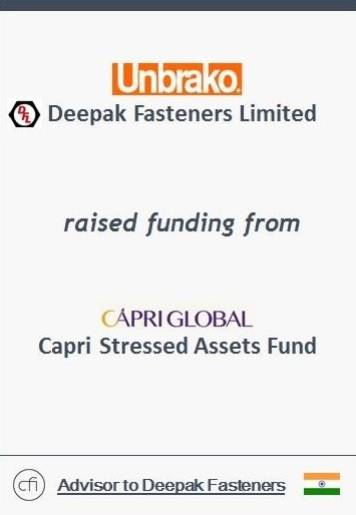
Saurabh joined Aarayaa in the year 2009 and is actively involved in valuation and merger & acquisition projects.
He is a graduate of Commerce from NarseeMonjee College of Commerce & Economics, M. Com, MBA in Finance from Thakur Institute of Management Studies & Research (TIMSR) and Company Secretary (C.S.).
He is also a visiting faculty at Malini Kishore Sanghvi College (Ritumbhara College), TIMSR etc.

Fintso buys WealthMagic SAAS from Datacomp

Pooja joined Aarayaa in 2007. She has been successfully involved in various projects of Mergers and Acquisitions, Capital Raising, Joint Ventures and Valuations. She has worked on all stages of a transaction right from deal origination to execution to closure. The deals that she successfully closed and worked on cover various industries like Consumer Goods & Retail, Casting and Forging, Oil and Gas,etc.
She holds a Bachelor in Management Studies from Mumbai University and is an MBA in Finance from MET Institute of Management, Mumbai.

COVID-19 has resulted in a paradigm shift in the way business will be conducted going forward. We believe there will be incremental focus on improving hygiene and sanitation not only at the work place but also at airports, entertainment zones, restaurants, etc. In addition, businesses will have to create standard operating procedures (SOPs) and necessary infrastructure to build consumer confidence and increase footfalls, once the economy opens up. Facility Management, as a sector, is at the forefront of this and likely to be one of the key beneficiaries.
Having said that, the businesses operating in this sector will have to initiate new measures to adapt to this new ‘normal’. One of the foremost developments will be adoption of technology and reduction of people’s touch. This will not only improve efficiency but also reduce dependence on manual labor. Besides, companies will have to invest in training and skill development to ensure smooth transition and technology adaptation. Although, the Company will have to incur initial capex but the return on investment (RoI) is expected to be incrementally better in the medium to long-run.
We further believe smaller companies with limited capital may not be able to compete with larger players in this new normal, which might result in M&A / consolidation.
The process of globalisation was already in retreat-it is being referred as ‘slowbalisation’. With this pandemic, vulnerability that global economic interdependence creates on supply chain has been recognised. The Governments have already started to give incentives to push local manufacturing and job creation to kick-start the revival of their economies. On the other hand, companies will be looking at countries like India to move their low cost base.
In the post COVID19 era, countries will reconfigure their economies to look at the perils and pitfalls of overdependence on cheap import. We believe production of intermediates to some extent, final goods to a large extent and essentials completely will move back to their region but production of basic and intermediate goods to a large extent will remain in low cost countries.
The result will be increased investments in ‘consumer’ economies by local and global companies. This in our view will lead to spurt in increase in M&A/investment in consumer economies and low cost countries (ex China) by MNCs. Are you ready for the post Covid19 era???
Globally, India is the 6th largest producer of chemicals and contributes 3.4% to the global chemicals industry. In terms of size, the Indian Chemicals industry is valued at ~$165bn and expected to grow at a CAGR of ~9% for next 5-7 years.
China, one of the largest manufacturers of chemicals globally, is struggling with pollution related issues which has resulted in shutdown of factories across the country. This coupled with rising manufacturing cost has created a vacuum and opened a window of opportunity for India.
To draw a parallel with the chemicals industry, India lost a massive opportunity, primarily to Bangladesh and Vietnam, for manufacturing ready-made garments (RMG) for global consumption. This can be attributed to lack of supportive policies and measures by the Government of India as well as inability of the stakeholders to capitalize and capture this billion dollar market. RMG has revolutionized and is the major driving force behind Bangladesh’s economy. To put numbers in perspective, RMG accounted for 10% of Bangladesh’s total GDP in 2004-05 and currently accounts for more than 15% of the total GDP. In addition, RMG exports currently contributes ~80% to the Country’s total exports.
We believe the Chemicals industry is at a similar inflection point and knocking on the doors of India.
In our opinion, the Chemicals industry in India is favorably positioned to seize this multi-billion dollar opportunity and needs to focus on the following important pillars:
1. Invest in human capital and skill development
2. Innovate and focus on R&D to gain competitive advantage
3. Upgrade technology to achieve efficiencies and control cost of manufacturing. Also, environmental compliance is critical to avoid a China-like situation
4. Consolidate to achieve economies of scale. Risk of stagnancy or going out of business will be higher with status quo
5. Regulate:
a. Government of India will have to create multiple Petroleum, Chemicals and Petrochemicals Investment Region (PCPIRs), similar to Dahej PCPIR, to leverage benefits of common resources and support services resulting in better cost economics.
b. Secondly, India will have to build robust infrastructure to support domestic and international movement of goods.
c. Lastly and more importantly, the Government of India will have to introduce investor friendly policies and environment to attract FDI in the Chemicals sector.
Is India ready? Will we grab this opportunity or miss the bus?
The lockdown has created a forced WFH for most of us from sectors where it has never happened before. Folks from service industry like IT, where WFH is part of organizational DNA, will agree that it’s a habit that many others will develop in time. Other service sectors and support functions should look up to best practices followed by them.
The question then arises – Would this disrupt the workplace and accelerate the transition to WFH? Would corporates make WFH a new normal as they are already looking for cost cutting avenues? Would people have homes with dedicated workspace?
We are now realizing how effectively we can work with various collaboration tools and video conferencing. Travel time, especially in the metros is saved drastically, traffic situation is improved, carbon footprint is reduced and work-life balance gets better. Naturally, there is a flip side to it like lack of face-to-face interaction/mentoring, team bonding, etc. One needs to strike a balance as per their work demands.
In the post COVID-19 era, WFH would probably not feel as difficult as it does today when the rest of the world is functional as before.
The coronavirus has curtailed the movements of people across the globe… Borders have already been shut down to stop its further diffusion… Trade and investment has come to a halt… Virtual meetings has become the new norm…
In the post COVID19 era, firstly, the host countries will likely make the visa norms stricter for persons traveling from the most affected countries. Besides thermal scanners, it is likely that there may be other medicals checkups at the airports. Secondly, individuals themselves will be apprehensive in taking up international travel. The biggest fear being quarantined because of airport checkups. Thirdly, the business travel will require a higher compelling threshold to make physical travel than was earlier because most are (forcibly) finding out that we can hold meetings virtually as well.
All this would also require global companies to have their base/represntative locally for swiftly grabbing business opportunities. On the other hand the unquantifiable damage of all this being reduced personal interaction and cultural exchange between countries.
In the aftermath of COVID-19, companies around the world are likely to transform strategies around sourcing and production of intermediates and final goods. There will be incremental ‘domestic’ production and sourcing of intermediates and final goods to limit the extent of disruption and promote local economies; although the possibility of a complete shift looks practically difficult. This will further allow companies to return to normalcy after a similar disruption in future in a relatively quicker time frame. Thus, it is likely to reduce cross-border trade.
The result will be new / incremental investments in ‘consumer’ economies by both local and global companies. This in our view will lead to spurt in increase in M&As / JVs / investments in consumer-driven economies by global MNCs.
Manufacturing expertise have been built over decades involving technology, expertise, resource utilisation and scale. For example: Mobiles in China, Apparels in south Asia and so on.
In the post COVID 19 Era, countries will want to encourage local manufacturing in order to boost their own economies. There already are calls on social media for buying locally, holiday locally, etc. Same thing may happen to support local production.
While simple items may get manufactured locally in short term, manufacturing involving complex technologies may not move out of their current clusters in the near future. Governments will come out with incentives for this to move to consumer countries. For this to be localized in medium term, technology, expertise and capital will have to be transferred from their current hubs to the local regions. This in our view will present several opportunities for cross border investments, Mergers & Acquisitions, Joint Ventures and collaborations.
COVID19 is about to rewrite the fundamental principles of Globalisation. The cumulative impact is so huge that another Post COVID19 Era will be added in the future books of Economics. The world is going to change and many of those changes would be irreversible.
With the world entering a new era, will Globalisation as we have known operate under new rules??? Will manufacturing be Localised??? Will movement of people may be limited??? Will sourcing be reshaped??? Will cross-border investment increase???
Keep watching this space for our views on how the world is going to change…
| Assisting Aizant Drug Research Solutions Pvt Ltd in raising of funds through private equity placement with Zephyr Peacock India. |
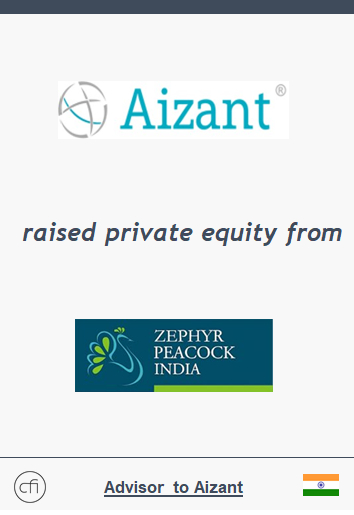
Foods & Inns Limited makes controlling investment in Kusum Spices.

| Magadh acquired equity stake in Durmech to become its Exclusive Manufacturing Partner globally. |
| Ebix Inc. acquires Lawson – A well-recognized travel house focusing majorly on International travel & allied services. |

| Ebix Inc. acquires Miles Software, a leading global provider of asset & wealth management Software. |

| S. Chand takes 51% partnership interest in Chetana. |

| Valuation of equity shares for ESOP purpose. |

| Valuation of equity shares for ESOP purpose. |
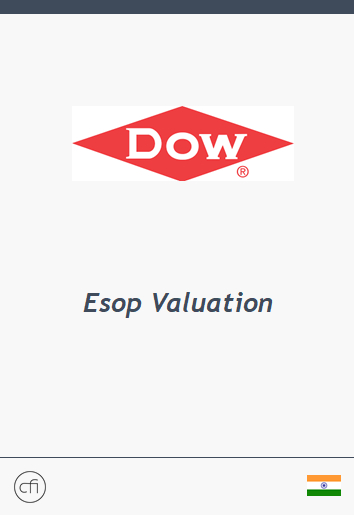
| Valuation of equity shares for ESOP purpose. |
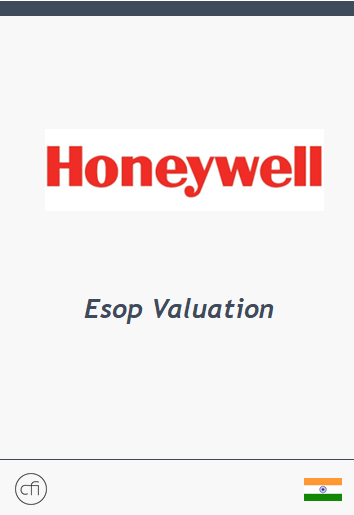
| Valuation of equity shares for ESOP purpose. |
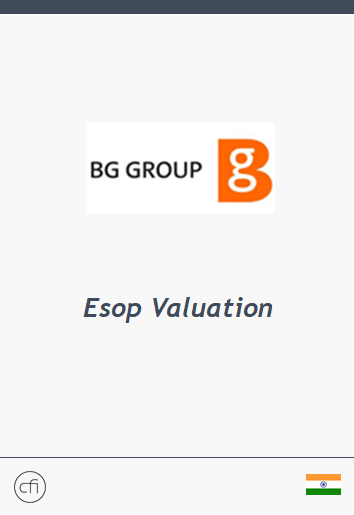
| Valuation of equity shares for ESOP purpose. |
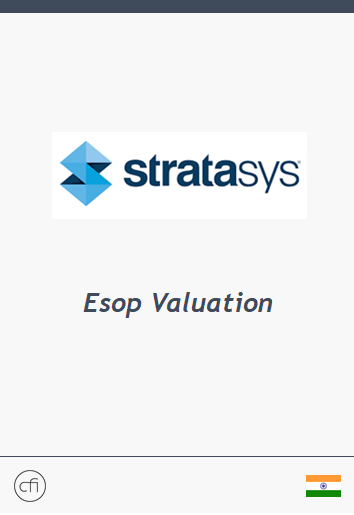
| Valuation of equity shares for ESOP purpose. |
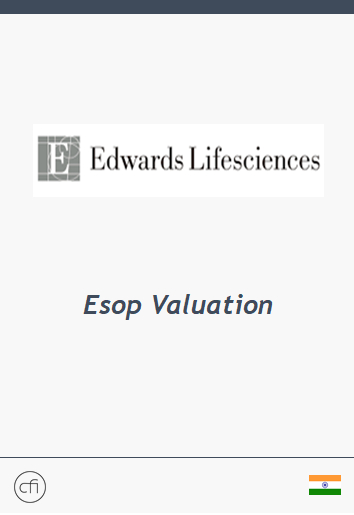
| Valuation of equity shares for ESOP purpose. |

| Valuation of equity shares for ESOP purpose. |
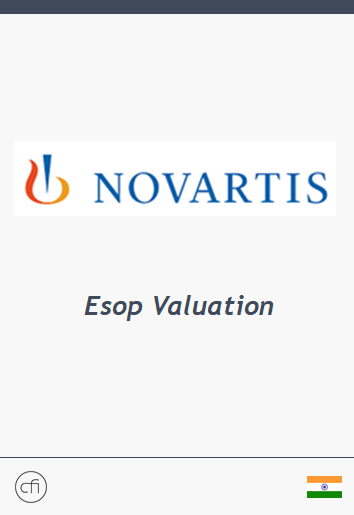
| Valuation of equity shares for ESOP purpose. |

| Valuation of equity shares for ESOP purpose. |

| Valuation of equity shares for ESOP purpose. |
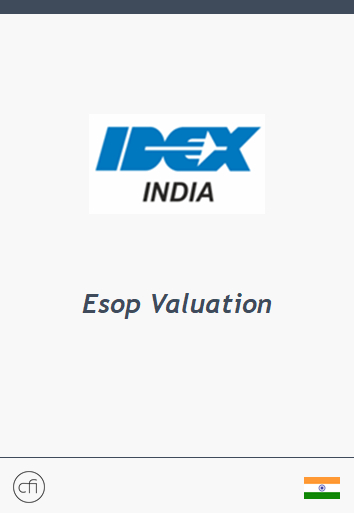
| Advisor to ZCL Chemicals Ltd. for syndication of Term loan & Working Capital Facilities from State Bank of India. |

| Advisor to Aryan Packaging Industries for syndication of Term loan & Working Capital Facilities from Bank of India. |

| Advisor to Precision Bearings Pvt. Ltd. for syndication of Term loan & Export/Import Finance facilities from The Export Import Bank of India. |

| Advisor to Words Infocom Pvt. Ltd. for syndication of Term loan & Export/Import Finance facilities from The Export Import Bank of India. |

| Advisor to ZCL Chemicals Ltd. for improvement in terms of sanction for Term loan & Working Capital Facilities from Corporation Bank. |
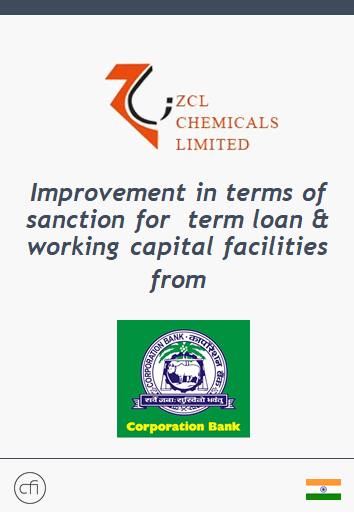
| Advisor to Haywards Synthetics Pvt. Ltd. for syndication of Term loan & Export Finance facilities from Bank of India. |
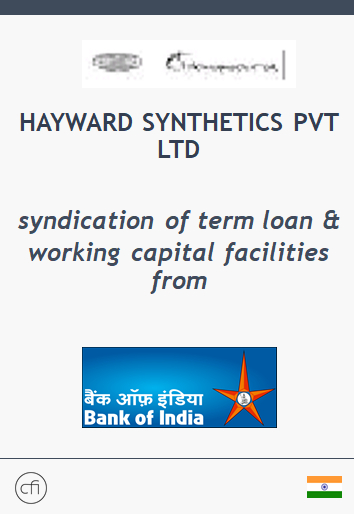
| Valuation of equity shares for ESOP purpose. |
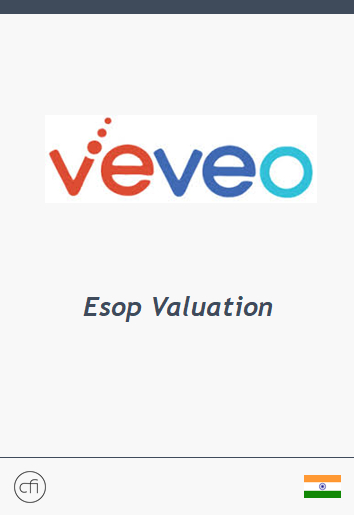
| Valuation of equity shares for ESOP purpose. |
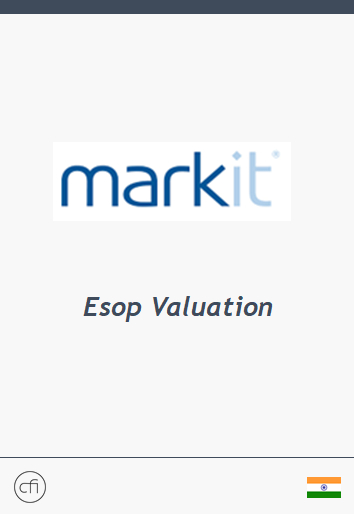
| Valuation of equity shares for ESOP purpose. |

| Valuation of equity shares for ESOP purpose. |

| Valuation of equity shares for ESOP purpose. |
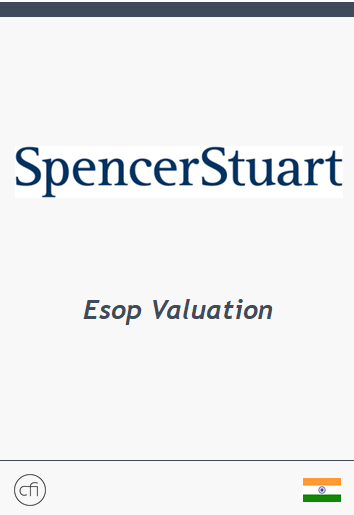
| Valuation of equity shares for ESOP purpose. |
